
Issue #: 11
Published: August / September 2017
- Price per issue - digital : 6.50€Digital magazine
- Access to Multihulls World digital archives Digital archives
Rounding a cape, whether the Cape of Good Hope, the Cabo de la Vela or the Cap Ambre, is always a memorable, mythical moment.
Transiting the Panama Canal is like a Cape, a magic moment in a round the world voyage.
We were at Portobello, the last peaceful anchorage before arriving in Colon, a noisy town and a very average anchorage. But this is just a quick stop for the crossing between two huge oceans, the Atlantic and the Pacific.
The administrative paperwork linked to the transit for the Panama Canal was carried out in three days. It is possible to do this yourself, and save the agent’s fee of around four hundred dollars.
Here are the steps we took in 2016, when we transited. But beware, these steps often change, our experience can therefore only be informative!
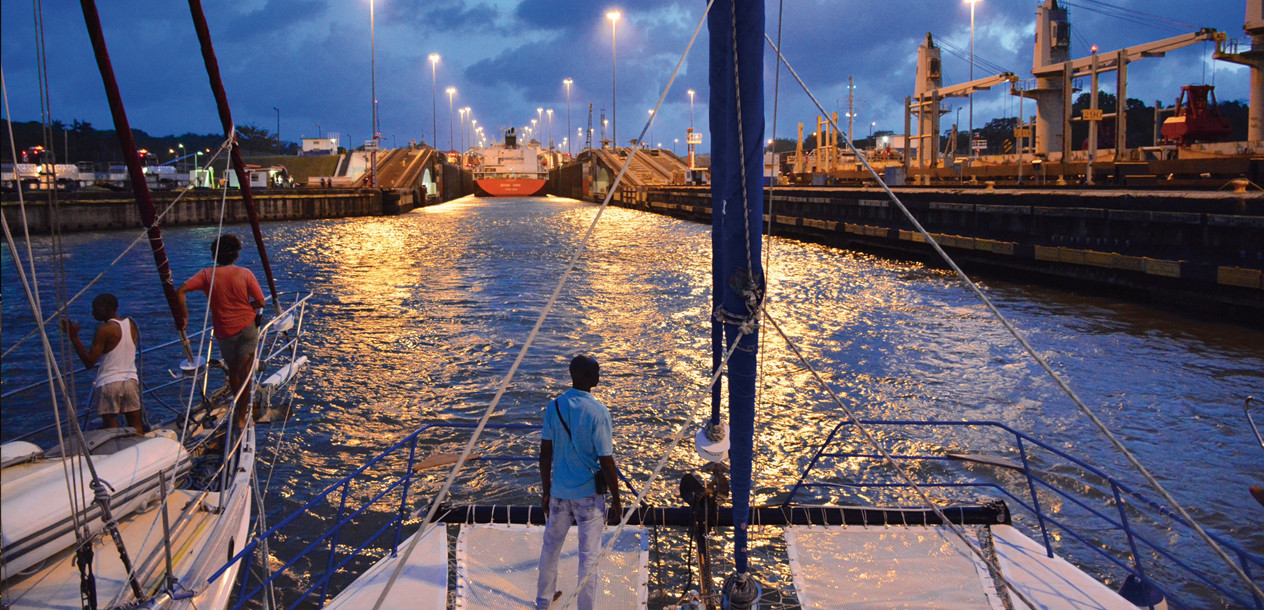
First you have to go to the port control tower in the (very secure) port of San Cristobal, in Colon. You will pay 2 or 3 dollars in a taxi to get from the only anchorage in Colon, the Club Nautico (9° 21.852’ N | 79° 53.582’ W). Here you will have to fill in the numerous forms. Once this was done, we were asked to go to the ‘Flats’ (9° 20.580’ | 79° 54.788’ W) with the boat, to get it measured there. Under 50 feet exactly, the price is the same for everyone, 1,000 dollars plus a deposit of 870 dollars (this can vary), which can be recovered after passing through the canal, if the transit has gone well.
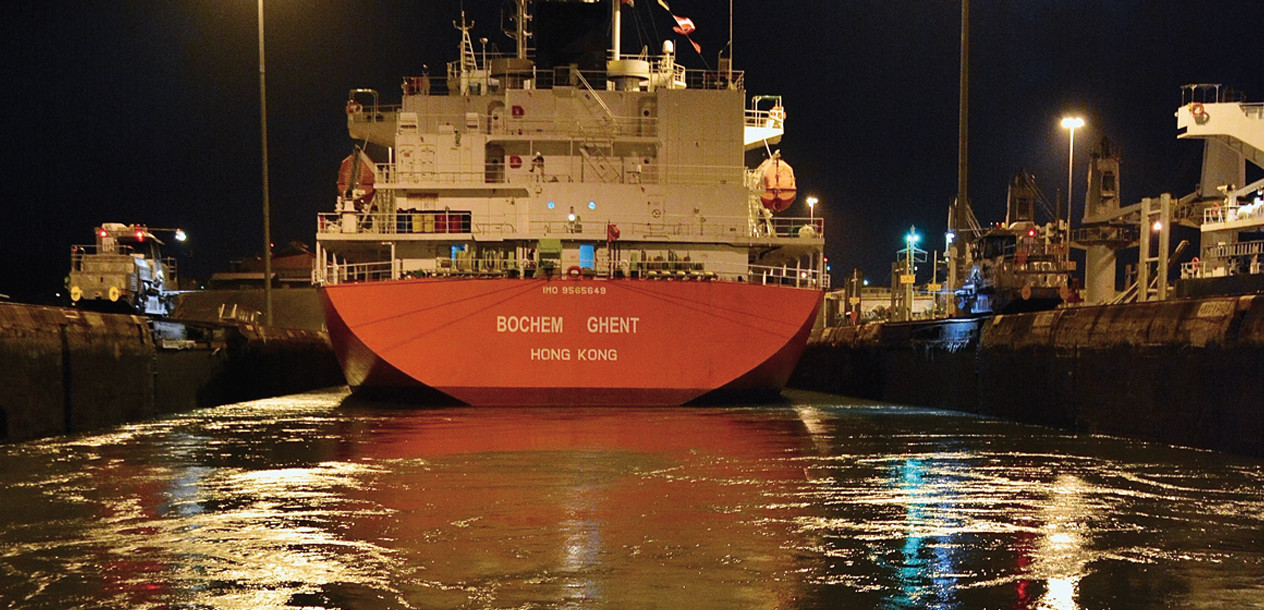
Once measured, you have to go and pay at the ‘City Bank’, just next to the port of San Cristobal. Then all you have to do is call the telephone number you were given to find out the date of your crossing.
The day of the crossing, you must go to the ‘Flats’ and monitor VHF channel 12. A boat will come to drop off a pilot (compulsory for everyone) on the boat. And note that there must be a minimum of five people aboard for the crossing. You also mustn’t forget to have 4 long mooring lines, and to protect your boat as well as possible with tires and fenders. We used the services of the famous Tito – well-known in Colon, having made a business of this – who obtained them for us.
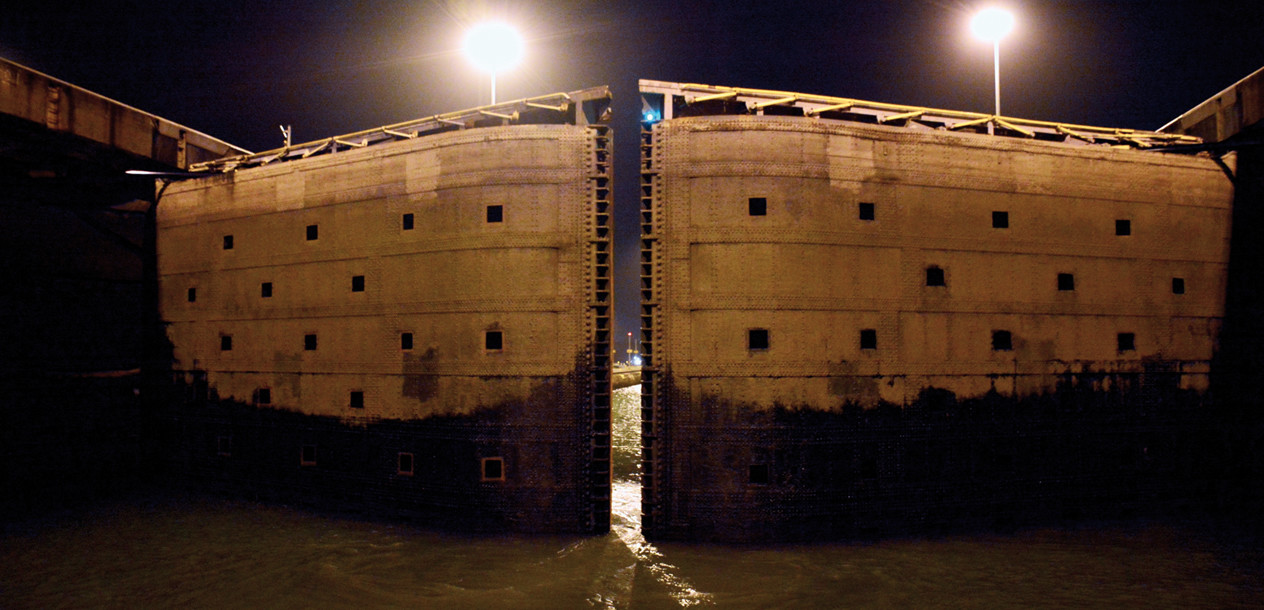
Transiting the canal takes place in two parts. Most sailing boats go through the first locks, those at Gatún, in the early evening, to arrive on Lake Gatun, 27 meters higher, at around 9 pm. Whether you are in a catamaran, a trimaran or a monohull, the ways of attaching yourself to the other boats are always different. In general, cats are in the center, with a monohull on either side. Everything also depends on the engine power and the beam or size of the boats. We found ourselves sandwiched between two monohulls.
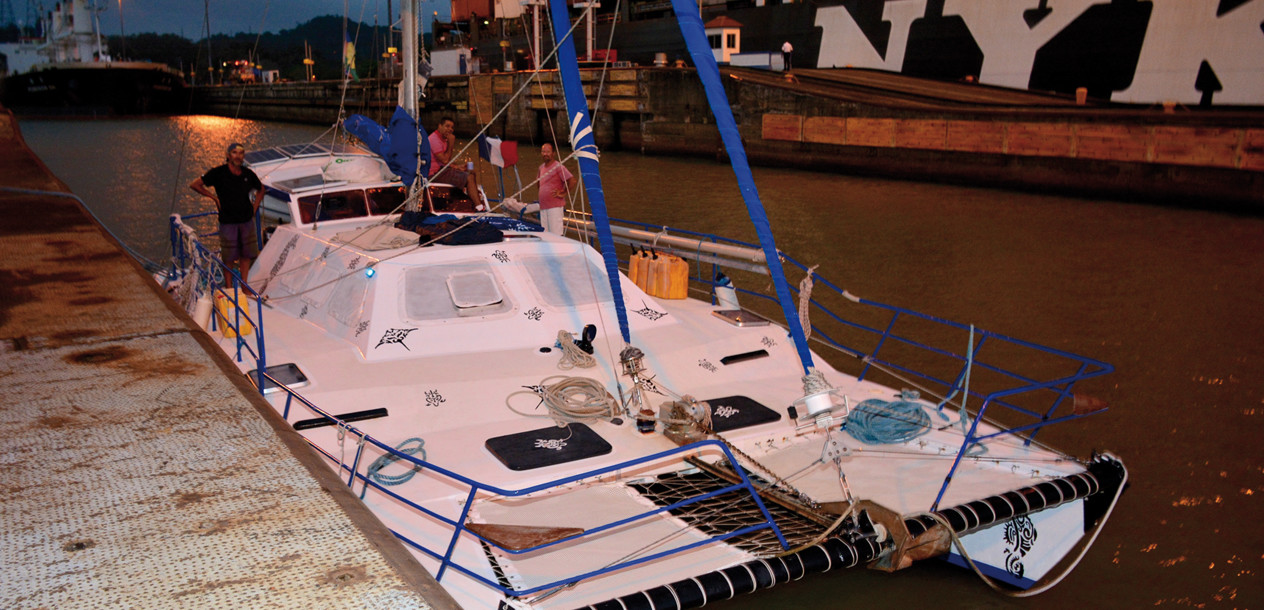
Once through the Gatúnlocksi, you will find yourself in Lake Gatun, where calm reigns. The expression ‘it’s as calm as a lake’ here takes on its full meaning! The pilot leaves the boat at nightfall, once you are tied up to the buoy provided for sailing boats.
From 8 am, the new pilots start to arrive, but be aware that they never announce a time. Our pilot arrived at 2 pm. Waiting is certainly the most boring thing during the Panama transit...
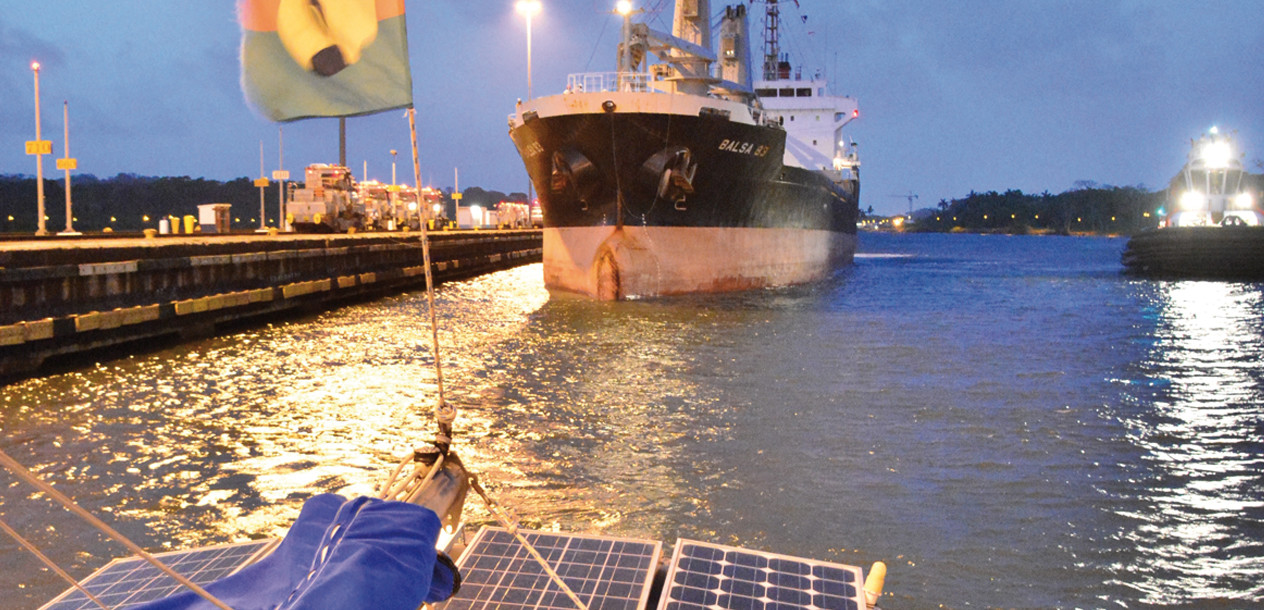
There are 25 miles to cover on the lake under engine to reach the Pedro Miguel locks. The pilot can ask you to accelerate or slow down, depending on the cargo ships passing.
Lake Gatun is wonderful, we followed the banks of stone and red earth on which rests a lush, wild forest. Certain pilots assure you that they have even seen jaguars along the banks... Alligators bask, stretched out on the rare grey sand beaches. They are quite hard to see, as they are well camouflaged, however they are always present.
We descended the last two locks alone, against the wall. A much simpler method, given that when the water drains out of a lock chamber, there is much less current.
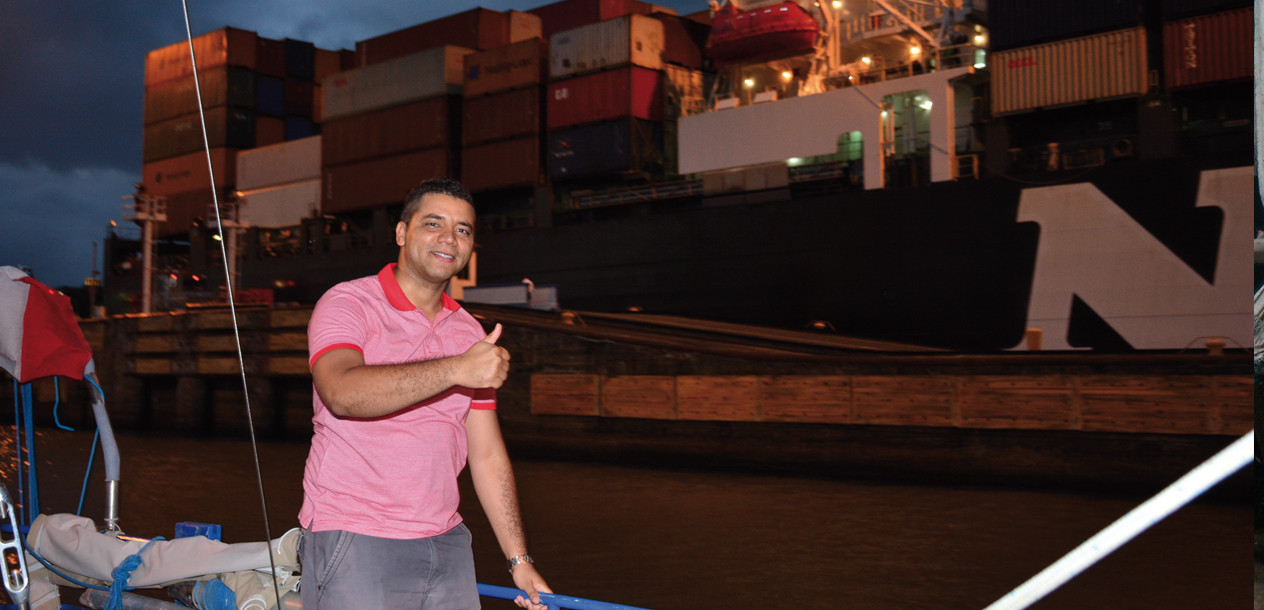
The last door then opened, and there was the Pacific, which sucked us out with a powerful current and ejected us from the lock. Our first anchorage back in the Pacific was at la Playita, opposite the Flamenco marina. Two other anchorages are available, the Balboa Yacht Club, as well as Flamenco Bay, behind the Playita anchorage, reputed to be very unpleasant. The dinghy dock here is a bit primitive, and above all, pay attention to the tides: the tidal range is 5 meters!
What readers think
Post a comment
No comments to show.